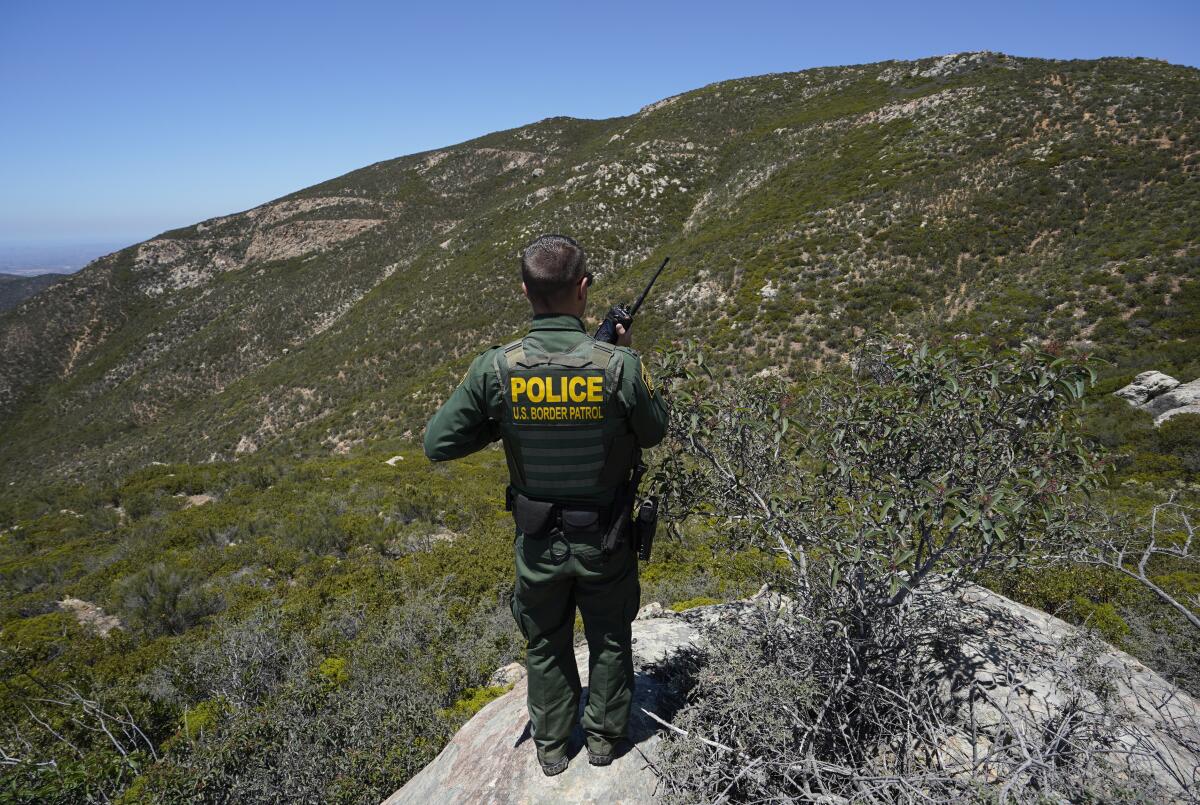CBP moves to phase out Border Patrol units accused of cover-ups

After information about the secretive units emerged, advocates and the families of people killed by border officials have called for them to be dismantled.
San Diego â Customs and Border Protection is planning to get rid of special Border Patrol units that have been accused of covering up official wrongdoing.
The agency announced Friday in a memo that the secretive units would be phased out by October.
That followed months of activism by loved ones of people killed by border officials. As recently as this week, more families came forward to call on CBP to do away with the units and to have their loved onesâ cases reinvestigated.
Attorneys, advocates and family members in a San Diego case spearheaded that effort. Attorneys investigating the 2010 killing of Anastasio HernĂĄndez Rojas for an international human rights case were the first to learn about the units and call for them to be dismantled after noticing evidence in the case documents that the San Diego unit had impeded the local police investigation.
According to an internal presentation about the San Diego unit, their job was to mitigate officialsâ liability.
The units â which have different names in different areas of the border such as Critical Incident Team, Critical Incident Investigative Team or Evidence Collection Team â were never given authority by Congress to investigate fellow agentsâ use of force.
There are three entities that do have authority to perform such criminal investigations. They are the FBI, the DHS Office of the Inspector General, and the Customs and Border Protection Office of Professional Responsibility.
In Fridayâs memo, CBP said that there is sufficient funding this year to staff up the Office of Professional Responsibility so that it can conduct investigations without relying on the special Border Patrol units. That could mean as many as 350 new hires for the office, the memo says.
The agency had previously said that the Border Patrol units were necessary, particularly in rural areas, to assist in investigations because of a lack of resources in the oversight office.
âEnsuring CBP has a robust and responsive critical incident response process is essential to maintaining the publicâs trust,â the memo says.
Advocates who support the families of those killed by border officials celebrated the move.
âThe elimination of cover-up teams â which engaged in obstruction of justice and acted only in the interest of agents, not the public â is an important first step towards addressing the longstanding problem of Border Patrol impunity,â said Vicki Gaubeca, director of the Southern Border Communities Coalition, which sent a letter to Congress about the units last year. âNot a single on-duty agent has been held accountable for taking the lives of hundreds since 2010.â
Earlier this year, two congressional committees opened an investigation and asked the Government Accountability Office to look into the Border Patrol units.
âFor the case of my husband, there hasnât been justice,â said Maria Puga, HernĂĄndez Rojasâ widow, in Spanish. âWe want these individuals who participated in this investigation to be investigated themselves. What they did is not OK. They didnât let everything be how it should be.â
She, along with the attorneys supporting her, has asked the San Diego district attorney to charge the unitâs agents with obstruction of justice in her husbandâs case.
Now that the units are being phased out, families are still calling for new investigations into what happened to their loved ones.
Among the families who spoke out this week is ValentĂn TachiquĂn, father of Valeria TachiquĂn, a 32-year-old U.S. citizen who was shot dead by a Border Patrol agent in Chula Vista in 2012.
âWe are seeking justice,â TachiquĂn told reporters at a news conference Tuesday. âWe want everything to be clarified. We want everyone in the department to be transparent about the facts, and it just came to light, the cover-up units that theyâre using â they shouldnât be there.â
His daughter would have turned 42 in April, he said.
The Union-Tribune reviewed case records provided by advocates about her case, including the autopsy report, a transcript of a police interview with the agent involved, analyses of evidence by two experts for a civil case related to the killing and part of an internal report created by the Border Patrol unit.
One early afternoon in September 2012, Valeria TachiquĂn happened to be at an apartment building in Chula Vista when Border Patrol agents dressed in plainclothes showed up there to do a âknock and talk,â meaning that the agents did not have a warrant to enter but could try to engage people there in consensual conversation.
TachiquĂn did not live in the apartment, nor was she the person that agents were looking for. When she left the apartment building, an agent whose badge was not visible asked her to identify herself. She declined and went to her car.
The agent followed her and stood in front of her car. He called to run her license plate. She tried to maneuver her car out of the parking space, making contact with the agent in the process, though not in a way that left a mark, as noted in one of the expert analyses in the case.
He instructed another agent to punch her window in and arrest her. After the second agent punched her window, she tried to drive away. The first agent ended up on the hood of her car â there is debate among those cited in the documents about whether he landed there because she struck him or because he jumped. He fired 10 shots, killing her.
âShe did what any sane woman would do, try to get away from a man with a gun,â said Andrea Guerrero, executive director of Alliance San Diego, one of the organizations advocating with the families, emphasizing that the agent was not visibly identified as law enforcement throughout the encounter.
In the agentâs version of events, he feared for his life and shot TachiquĂn as he came off of the hood of the car. According to a witness who later came forward to speak with reporters, the agent was standing on the ground as TachiquĂn reversed to get away from him when he shot her. A ballistic analysis conducted as part of a civil court case brought by TachiquĂnâs family found that the agentâs version of the story did not hold up.
But it was only after the revelations in the HernĂĄndez Rojas case that attorneys noticed something else about the investigation into TachiquĂnâs killing.
The Critical Incident Investigative Team for the San Diego Border Patrol Sector had participated in the police investigation, which raises questions about what influence the team had on its outcome. An agent from the team was present for TachiquĂnâs autopsy as well as a police interview with the agent who killed her. The agent from the team was even allowed to question the agent directly during that interview, according to the transcript.
The witness who came forward also reported that Border Patrol agents at the scene had detained him in their car, demanding to know what he saw. Bullet casings from the shooting were damaged, suggesting they were run over by cars and moved, according to a document from the civil court case, making them less useful in determining exactly what took place.
The Border Patrol team generated an internal report based on their participation in the investigation, which advocates believe they used to guide the agencyâs public-facing narrative as they had in the HernĂĄndez Rojas case.
âThey did this in the interest of protecting the agents involved. They are not neutral,â Guerrero said. âThey should not have been anywhere near the investigation. They corrupted the evidence, and they damaged the case.â
The grandmother of Jose Antonio Elena Rodriguez, a 16-year-old boy who was walking down a sidewalk in Mexico when he was shot and killed by a Border Patrol agent in 2012, and Marisol GarcĂa AlcĂĄntara, who was herself shot in the head by a Border Patrol agent when she was sitting in the backseat of a car in Arizona in 2021, joined TachiquĂnâs father and HerĂĄndez Rojasâ widow in calling for more to be done after learning that the Border Patrol teams had been involved in their loved onesâ cases.
âHe [the agent] destroyed an entire family. In the house, thereâs still a empty chair, an empty room,â said DoĂąa Taide, Rodriguezâs grandmother. âI want that the case of my grandson be investigated again so that the truth can come to light, not lies.â
More to Read
Updates
9:54 a.m. May 7, 2022: This article has been updated with additional detail on families demanding new investigations.
Sign up for Essential California
The most important California stories and recommendations in your inbox every morning.
You may occasionally receive promotional content from the Los Angeles Times.











